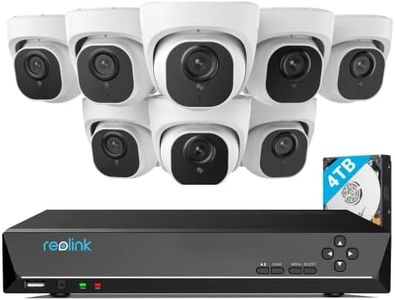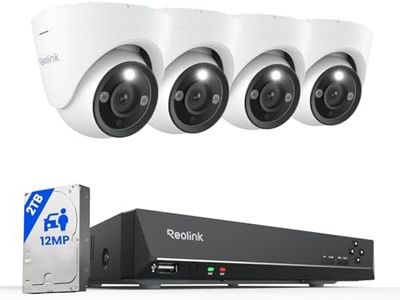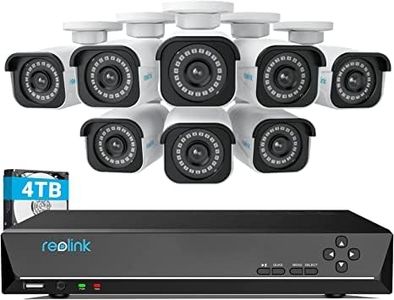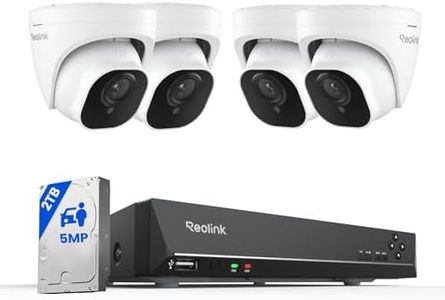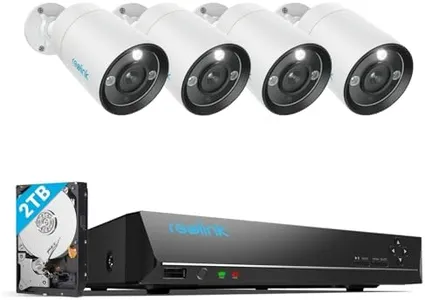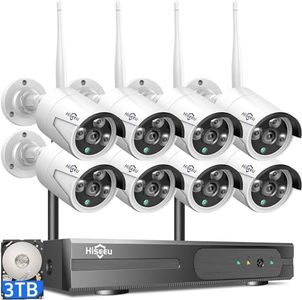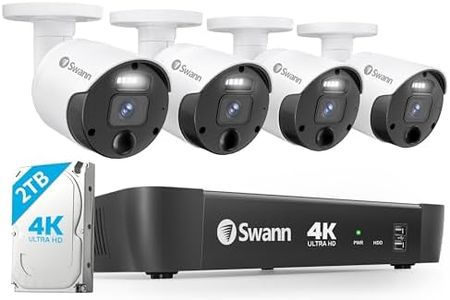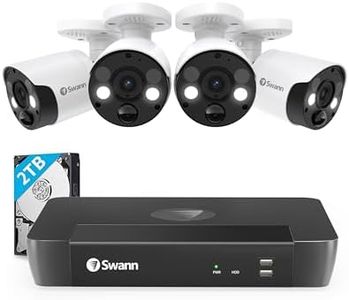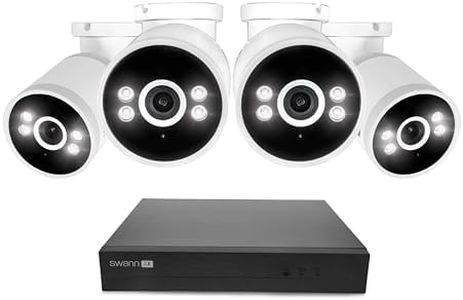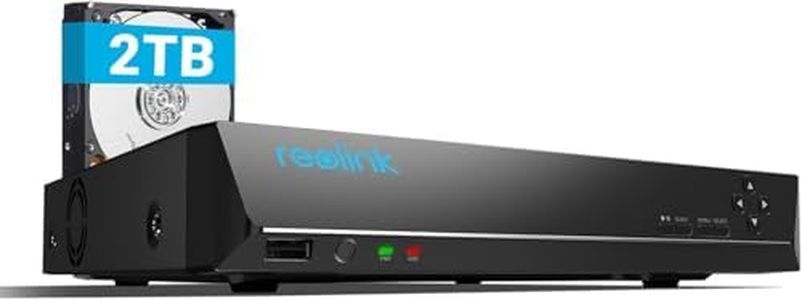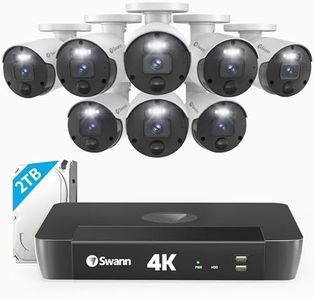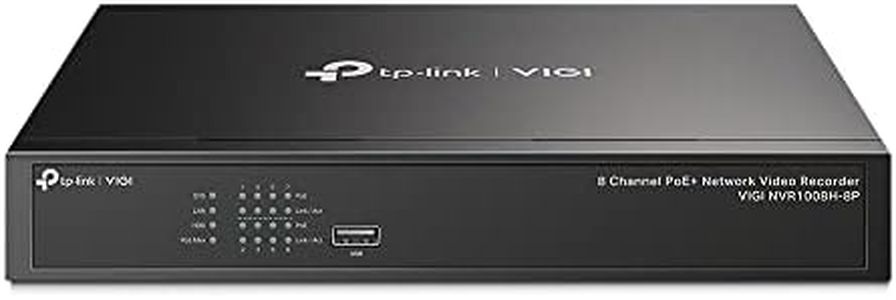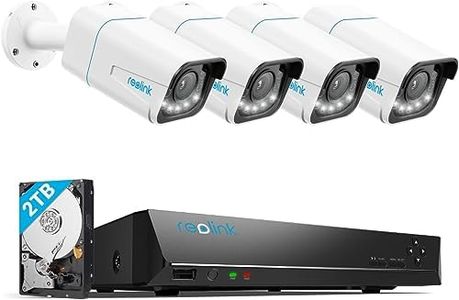We Use CookiesWe use cookies to enhance the security, performance,
functionality and for analytical and promotional activities. By continuing to browse this site you
are agreeing to our privacy policy
10 Best Nvr Systems
From leading brands and best sellers available on the web.Buying Guide for the Best Nvr Systems
When choosing an NVR (Network Video Recorder) system, it's essential to align your choice with your surveillance needs. NVR systems record video footage from IP cameras over a network and provide features like remote viewing, storage, and playback. The key is to consider your security goals: assess how many cameras you need, the quality of video you expect, and how easy you want your system to be to manage and expand. By understanding the main specifications, you can find an NVR that fits seamlessly into your security setup and offers the reliability and flexibility you need.Number of ChannelsThe number of channels specifies how many cameras the NVR can support at once. This is crucial because it determines how many areas you can monitor simultaneously. Channel options typically range from 4, 8, 16, 32, or more. Smaller setups (like small homes or shops) may only need 4 to 8 channels, while larger businesses or properties might require 16 or more. Think of your current needs and plan for potential future expansion—choosing an NVR that offers more channels than you need today can prevent the hassle of upgrading later.
Video Resolution SupportResolution support tells you the highest video quality the NVR can capture and record from your cameras, measured in megapixels or terms like 720p, 1080p, 4MP, or 4K. Higher resolution provides clearer and more detailed images, which is important for identifying faces or license plates. However, greater detail also takes up more storage space. For general observation, 1080p might be enough, but higher resolutions like 4K are better for critical areas. Consider what level of detail is necessary for your environment and if your cameras and viewing setup can support higher resolutions.
Storage Capacity and Hard Drive BaysThis spec indicates both the amount of storage included and the number of hard drives you can install. More storage means more days of footage before the system starts overwriting old data. Entry-level NVRs might support a single drive, while others offer multiple bays for extra capacity or redundancy (such as RAID setups). Think about how many days or weeks you want to keep recordings, the number of cameras, and the resolution you use—all of which affect storage needs. If continuous recording is crucial or you're using many high-resolution cameras, look for an NVR with higher storage capacity or multiple bays.
PoE (Power over Ethernet) SupportPoE means the NVR can provide both power and network connectivity to cameras using a single Ethernet cable, simplifying installation and reducing cable clutter. Some NVRs have built-in PoE ports, while others require separate network switches. If you want easier, cleaner installs, especially in new setups, PoE is a strong advantage. If your cameras are already installed with their own power sources, or you're integrating with existing infrastructure, this may be less important for you.
Remote Access and App SupportRemote access lets you view live or recorded footage from your smartphone, tablet, or computer from anywhere. Most modern NVRs support this, but ease of use and reliability can differ. Check for systems that offer user-friendly apps, straightforward setup, and features like real-time alerts. If you travel frequently or want to monitor multiple locations, good remote access tools make managing your security significantly easier. If you prefer local control, this may be less of a priority.
Video Compression FormatThis spec tells you how the NVR stores video, usually using formats like H.264 or H.265. Newer formats like H.265 allow you to store higher-quality video in less space, which extends your storage and can improve remote streaming. If you rely on storing footage for longer periods or want to save bandwidth with remote access, look for support for the newest, most efficient compression standards.
Integration and CompatibilityIt's important to know if the NVR is compatible with cameras from different brands or only specific models. Some use open standards (like ONVIF), which allows you to mix cameras from different manufacturers, while others are locked to proprietary systems. If you already have cameras or want flexibility to change brands in the future, broad compatibility is a major plus. If you’re buying an ‘all-in-one’ kit, compatibility issues are less of a concern.
Smart Features and AI CapabilitiesAdvanced NVRs may offer features like motion detection, facial recognition, intrusion alerts, and more. These smart features can make your system more effective by focusing recordings on important events and reducing false alarms. If you need to track specific behaviors or want more automation, look for systems with robust smart features. For basic monitoring or if you prefer manual review, these extras may not be needed.
